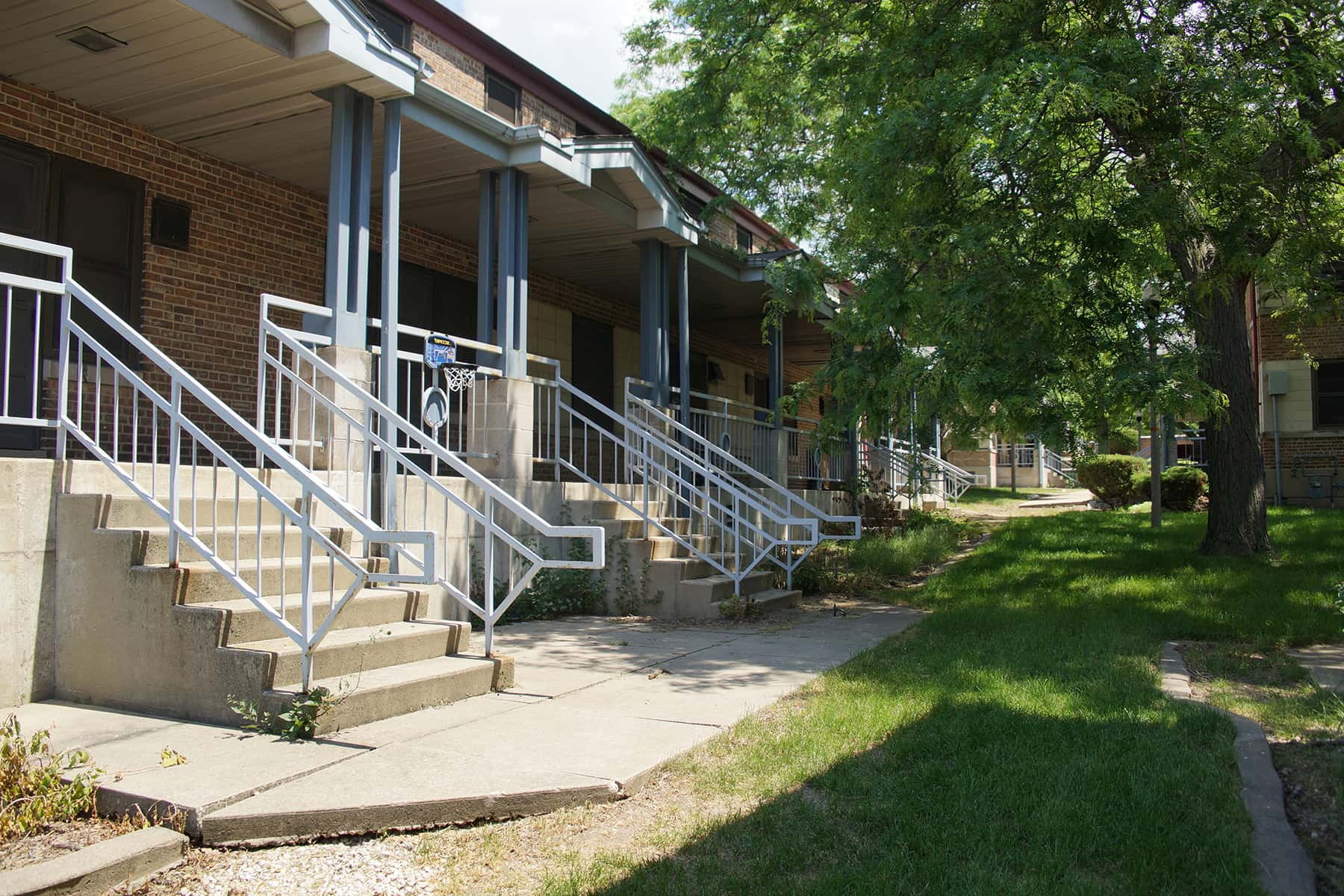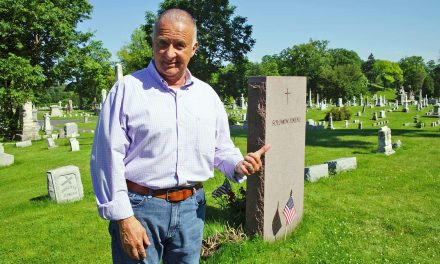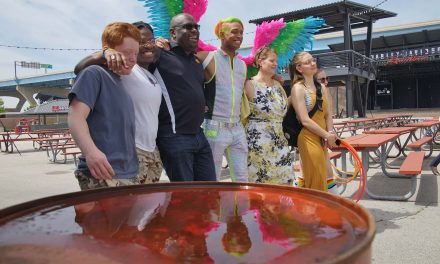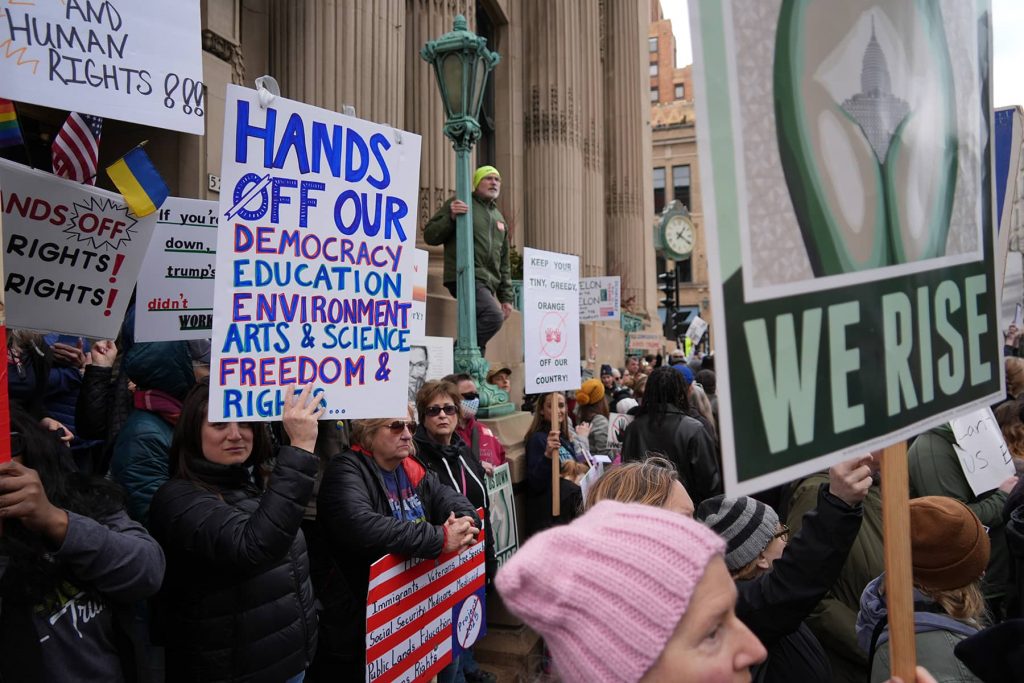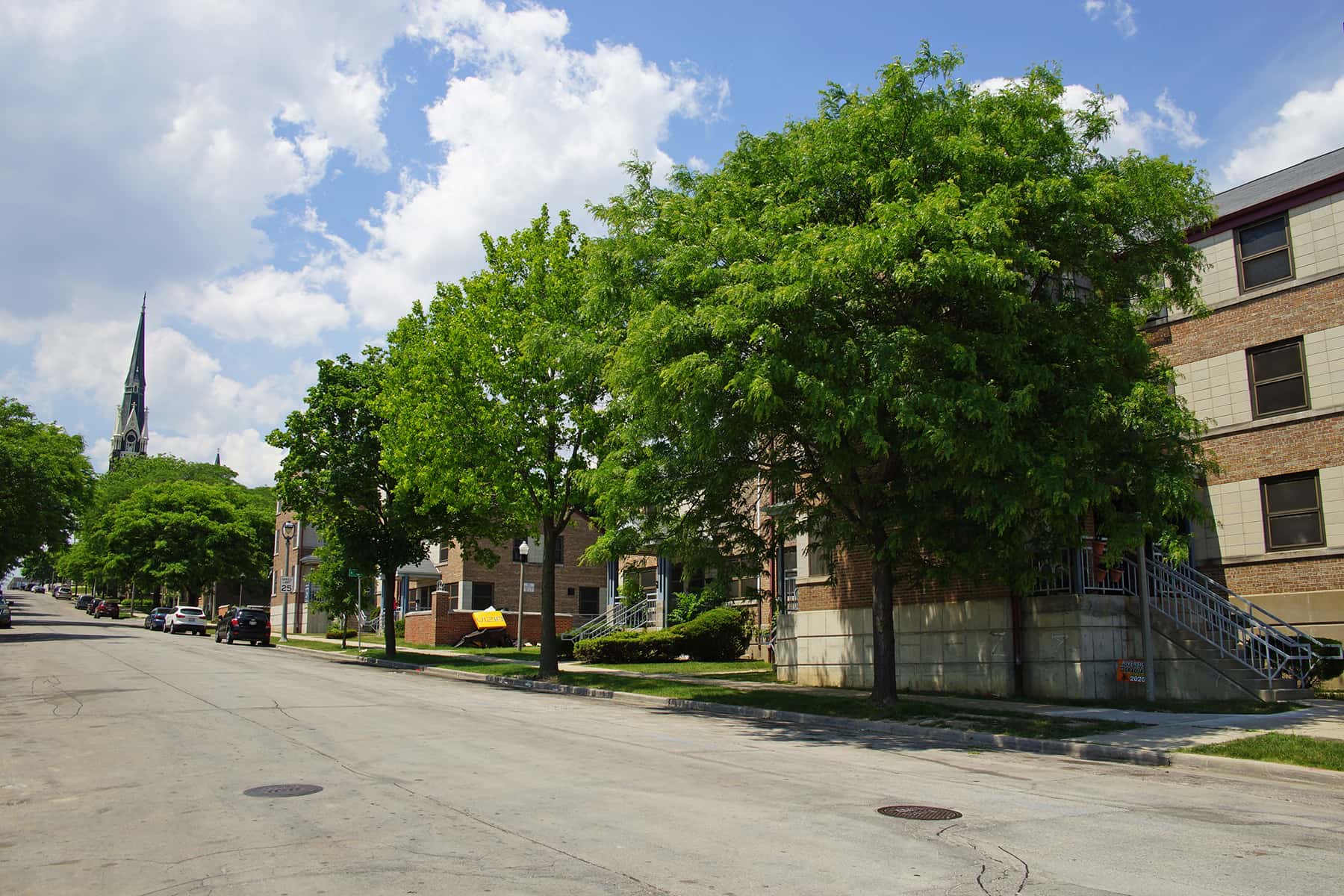
“You deplore the demonstrations taking place in Birmingham. But your statement, I am sorry to say, fails to express a similar concern for the conditions that brought about the demonstrations. I am sure that none of you would want to rest content with the superficial kind of social analysis that deals merely with effects and does not grapple with underlying causes. It is unfortunate that demonstrations are taking place in Birmingham, but it is even more unfortunate that the city’s white power structure left the Negro community with no alternative.” – Dr. King’s Letter From a Birmingham Jail, April 1963
For all of the people in suburban communities complaining about the protests that erupted after the murder of George Floyd I have a message. Get over it! If you want to be upset about something, be upset about the root causes of the protests instead. Be mad about the constant police brutality that does not seem to change despite the protests. If you want the protests to end, work to force your elected officials to do something more than claim they are in favor of police reform and an end to systemic racism. Stop whining about how much you are being inconvenienced by people marching through your communities.
You’ve had to endure just a little over 100 days of protests, while Black people have been dealing with racism in this country for 401 years. Black people have been inconvenienced the equivalent of four years for each single day you’ve had to deal with protests. Let me repeat this point. Each single day of protests in your communities is the equivalent of four years of anti-Black racism, discrimination, marginalization, murder, mayhem, rapes, kidnappings, lynchings, family separations, captivity, withholding of opportunities, segregation, and general disrespect that we have endured unabated.
Just over three months of inconvenience, which has not been equally shared by every community you live in, can’t compare to the continuous bigotry and systemic racism we have faced for sixteen generations without a break. If you want to know why we are still so upset pick up James Loewen’s book Lies My Teacher Told Me: Everything Your American History Textbook Got Wrong. Or read Stamped from the Beginning: The Definitive History of Racist Ideas in America by Ibram X. Kendi. Also read The Betrayal of the Negro: From Rutherford B. Hayes to Woodrow Wilson by Rayford Logan.
I could list one hundred other books but you get the point. You don’t know enough to complain because you have not been taught what we are fighting against. Many people still think racism is about individual acts of bigotry and doubt that systemic racism is real. Some have the audacity to call it a hoax. I’m exasperated by the continuing need to define something that should be so obvious. No one in this country can honestly claim complete ignorance about the horrific story of Black peoples lived experiences in America.
When Dr. King wrote “You deplore the demonstrations taking place in Birmingham. But your statement, I am sorry to say, fails to express a similar concern for the conditions that brought about the demonstrations” he could have easily been talking about today’s protests. How little has changed in the underlying issue that Americans refuse to acknowledge. Laws don’t make racism go away. If they did, racism would have died a long time ago. Black folk would have pushed for even more new laws if they thought they would do the trick. Laws can only be a mitigating factor. And that’s if they are enforced. For far too long the laws have not been enforced or have been enforced in a way that allowed discrimination to be perfectly legal or written in such a way that they have little real power to end discriminatory behaviors.
All of the progress made against discriminatory treatment against our community happened because Blacks have constantly fought back by protesting. America has never been good enough to do the right thing without a strong push or kick in the rear end. Evidence from the pushback to the current movement to dismantle systemic racism makes us feel that this will be a permanent state of affairs in America. The battle will continue. The sustained pressure from advocates from communities of color and other marginalized groups have always been the driving force for changes in discrimination built into the infrastructure of America.
I think one of the best examples of systemic racism that is instructive for those protesting today is the fight for fair housing fought over many decades. Whites for many decades fought to maintain racially homogenous spaces for themselves to the detriment of people of color. They had the desire and more importantly, the power to self segregate. People of color wanted to live in integrated communities but were denied the opportunity. Few things were off-limits for White residents in this attempt to create and maintain all-white enclaves especially when it came to preventing Blacks from moving into their communities.
“Whites chose to resist Black entry in an attempt to make them so unwelcome that they would leave. Accounts dating back to the late nineteenth century show that Blacks moving into predominantly white areas faced a substantial risk of encountering racial hostility and becoming victims of crimes to their person or property. Whites’ actions in opposition to Black residents ranged from … bombings, arson, cross burnings, and vandalism, to … offers to buy the home and the use of racial epithets…The crimes were not limited to the South, and, in fact, they occurred more frequently in the North and West. Second, most were in central cities of metropolitan areas rather than suburbs or rural areas…In the North, intense discrimination and segregation dating from the late nineteenth and early twentieth centuries, when large numbers of Blacks migrated to northern cities, made any breach of that pattern threatening to whites.” – From “Crimes without Punishment: White Neighbors’ Resistance to Black Entry” by Leonard S. Rubinowitz and Imani Perry (Journal of Criminal Law and Criminology)
One of the most important players in creating segregated housing in this country was the federal government. Richard Rothstein’s phenomenal 2017 book, The Color of Law: A Forgotten History of How Our Government Segregated America documented how the federal government helped to create and maintain segregated spaces across the country intentionally for decades.
The federal government helped Whites deal with the influx of Blacks fleeing the Jim Crow South during the Great Migration. When millions of Blacks left the racism they knew all too well in the South, they were surprised to see the strength of anti-Black fervor in other parts of the country. This massive resistance to having Black neighbors accelerated after the school integration decision in 1954. White flight began in earnest in the 1950s and many suburban communities were built and incorporated in this decade. It’s not accidental that a national freeway system was built just in time for Whites to move into newly built ring suburbs.
Resistance to Black neighbors by Whites outside the South explains why most of the most heavily segregated metropolitan areas in the country are in the North and Midwest. The list includes, Milwaukee, Chicago, Detroit, Cleveland, Buffalo, and other places far from the South. Some of these communities saw rapid growth in their Black population due to the exodus of Blacks fleeing the violence and degradation of the Jim Crow South. Detroit’s Black population grew from 2,185,283 in 1910 to 3,376,438 twenty years later. Chicago and Cleveland had similar growth in their Black populations. Milwaukee on the other hand saw little change in its Black population until the 1940s due to the need for Black labor during WWII.
The role that the federal government played in creating segregation began with the much celebrated New Deal under President Franklin D. Roosevelt. In a 2017 interview Rothstein describes what happened.
“We have a national myth that the reason every metropolitan area is segregated is because of the actions of private individuals, and we call that de facto segregation. The reality is that residential segregation was created by racially explicit, purposeful federal policy designed to keep races separate residentially…In many cases, the federal government during the New Deal, starting with the Public Works Administration, created separate projects for whites and Blacks by demolishing integrated neighborhoods…the federal government embarked on another program, and that was to create financial incentives for white families to move out of urban areas into white-only suburbs, and it did this with the Federal Housing Administration (FHA). They had a program of guaranteeing bank loans of developers of large subdivisions. The condition of the FHA’s subsidy of these bank loans was that no homes be sold to African Americans. This was explicit…the entire landscape that we see today of segregated neighborhoods could not exist without government policy. You might even say that the government responded to private prejudice by implementing these systems.”
For years Whites created all-white neighborhoods by passing racially exclusive zoning laws. These were challenged in court and in a famous case in 1917, Buchanan v. Warley, those laws were ruled unconstitutional by the U.S. Supreme Court. According to the Boston Fair Housing Council the victory was hollow. “Prior to World War I, Mid-Atlantic States along the border of the South began to adopt zoning ordinances that enforced residential segregation in response to the migration of blacks from the “Deep South” states.
For example, Louisville, Kentucky forbade a “colored” person from moving into a home in a neighborhood with a majority of white residents and vice versa…the Supreme Court found that Louisville’s racial zoning ordinance violated the 14th Amendment’s due protection clause and marked an infringement of contractual freedom because it interfered with private property sales between whites and blacks. While the Buchanan decision marked a victory in the battle against racial segregation, it focused on upholding property rights, not affirming equal protection under the law. Buchanan only applied to legal statues, not private agreements and as a result, racially-restrictive covenants became a common practice.”
The Mapping Prejudice project at the University of Minnesota is great resource on the use of racial restrictive covenants. They describe what these widespread covenants were.
“Racial covenants were tools used by real estate developers to prevent people of color from buying or occupying property. Often just a few lines of text, these covenants were inserted into warranty deeds across the country. These real estate contracts were powerful tools for segregationists. Real estate developers and public officials used private property transactions to build a hidden system of American apartheid during the twentieth century.”
They were used around the country to create all-white neighborhoods. These covenants were enforced and produced in cooperation with local real estate boards, financial institutions, builders, title companies, neighborhood associations and the Federal Housing Administration.
In 1926 the U.S. Supreme Court ruled in Corrigan v. Buckley that these covenants were perfectly legal. In 1922 in Washington DC a white woman, Irene Corrigan, attempted to sell her house to a Black couple, Helen and Arthur Curtis. A year earlier Corrigan and her neighbors signed a racial covenant saying they would not sell or rent their homes to any Black people. One of Corrigan’s neighbors sued her for violating the racial covenant. The District Supreme Court ruled that she had violated the covenant. The case was appealed to the U.S. Supreme Court. By refusing to hear the case they allowed the DC Supreme Court ruling to stand. The U.S. Supreme Court argued that constitutional protections against discrimination were applicable to action by states only, not by individuals and therefore they had no standing to hear the case. This set a precedent which made these discriminatory covenants legal across the country.
The 1948 decision by the U.S. Supreme Court in Shelley v. Kramer that these race-restrictive covenants were no longer legally enforceable was supposed to be the death knell for these covenants but was roundly condemned and ignored by Whites around the country. As is so often the case, the court left an out for those choosing to use the covenants.
“private agreements to exclude persons of designated race or color from the use or occupancy of real estate for residential purposes do not violate the Fourteenth Amendment; but it is violative of the equal protection clause of the Fourteenth Amendment for state courts to enforce them.”
The court did not rule that the covenants were unconstitutional. They simply stated that private parties could continue to use them, but state enforcement of such covenants (including court ordered enforcement) would violate the Equal Protection clause of the 14th Amendment. As a result, the covenants continued to be written and used for decades after they were supposedly unenforceable.
Here in Milwaukee, these racial covenants were written throughout the city. A 1940 report by NAACP attorney George Brawley found that 90 percent of land platted by the city from 1910-1940 was covered by racial covenants. In addition to this, so-called “gentlemen’s agreements” were in place pledging Whites to not sell or rent to Blacks outside the “black belt.”
In Milwaukee County’s eighteen suburbs residents and developers used them to keep those communities all-white. Lois Quinn and a team at the Metropolitan Integration Research Center (MIRC) investigated their use in Milwaukee’s suburbs. They wrote a scathing report, Racially Restrictive Covenants: The Making of All-White Suburbs in Milwaukee County.
In the report they quote Robert C. Weaver.
“It seems apparent, in retrospect, that the rise of racial covenants and other instruments of enforced segregation was more the result of manipulation than the reflection of a spontaneous movement. Intense resistance to the concept of Negro neighbors was usually concentrated in given neighborhoods. It became widespread only after the professional advocates of enforced residential segregation had spent much time and money to propagandize its necessity and desirability. The fact that many of those to whom the propaganda was addressed were insecure whites intent on and anxious in effecting social and economic mobility assumed a responsive audience.”
Their research uncovered how extensively these racial covenants were used to create all-white suburbs around Milwaukee going back to the years just after WWI. The MIRC found that “By the 1940’s at least sixteen of the eighteen Milwaukee County suburbs were using racially restrictive covenants to exclude black families from residential areas.” The only places they failed to find them was in Oak Creek and River Hills.
“Subdivisions established in 1927 in Cudahy, Shorewood, West Milwaukee, Whitefish Bay, and Wauwatosa excluded all non-Caucasian families. In the 1930’s subdivisions created in Bayside, Fox Point, Glendale, Greenfield, Hales Corners, St. Francis and South Milwaukee categorically excluded blacks. In the 1940’s Brown Deer, Franklin, Greendale, Hales Corners, St. Francis, and West Allis were still using covenants to exclude blacks from newly created subdivisions. As late as 1958, ten years after the United State Supreme Court outlawed judicial enforcement of these covenants, race restrictions were recorded in the courthouse for a new subdivision in Greendale. Many of the racially restrictive covenants on Milwaukee area subdivisions extended into the late 1960’s and mid-1970’s. Several are still in effect today. For example, the restrictions placed on the George T. Hansen Subdivision in South Milwaukee in 1937 are in effect until January 1, 2024.”
Wauwatosa was the greatest offender. They wrote the largest number of covenants of any suburb in Milwaukee. “Fifty-one of the 100 subdivisions with restrictive covenants include clauses that prohibit ownership or residence by persons not of the white race. These racial restrictions were initiated by 27 realty companies and 24 individual land owners.”
In 1919 the Washington Highlands subdivision recorded the first. It stated unequivocally:
“At no time shall the land included in Washington Highlands or any part thereof, or any building thereon be purchased, owned, leased or occupied by any person other than of the white race. This prohibition is not intended to include domestic servants while employed by the owner or occupied by and land included in the tract.”
It was not until sometime in the 1980s before the covenant was amended to remove this language. The covenants ran with the land meaning that any owner who purchased the home had to abide by its terms.
What made these racial restrictive covenants so insidious is that the Federal Housing Administration pushed the use of these racial covenants in their underwriting manuals for years and even gave a template to use on writing them. As part of the New Deal the Home Owners Loan Corporation (HOLC) from 1934-1940 created “Residential Security” maps, commonly known as redlining maps, in 239 cities around the country.
According to the National Community Reinvestment Coalition, “Neighborhoods considered high risk or “Hazardous” were often “redlined” by lending institutions, denying them access to capital investment which could improve the housing and economic opportunity of residents…HOLC examiners consulted with local bank loan officers, city officials, appraisers, and realtors to create “Residential Security” maps of cities.The examiners systematically graded neighborhoods based on criteria related to the age and condition of housing, transportation access, closeness to amenities such as parks or disamenities like polluting industries, the economic class and employment status of residents, and their ethnic and racial composition.” Neighborhoods received a color-code on the maps: green designated the “Best,” blue designated “Still Desirable,” yellow designated “Definitely Declining,” and red designated “Hazardous.” Black residents automatically qualified a neighborhood for hazardous status as they were considered according to the HOLC an “inharmonious racial group.”
The maps did not create redlining, they simply codified already existing practices. They worked in consort with the use of racial covenants to create a toxic soup of unfair housing practices. Kevin Ehrman-Solberg Digital and Geospatial Director of the Mapping Prejudice project tells us that the FHA underwriting manuals spoke very clearly about the importance of why they pushed these covenants so strongly.
“The FHA refused to give an area a green line designation, this is the best designation they give, unless restrictive covenants are already in place…racial covenants aren’t just about discriminating against people of color. It’s about enriching white people. And I think that’s the part that often gets lost in this narrative.”
The Mapping Prejudice project details how “federal housing administrators endorsed these legal instruments, requiring them for projects that used federally-backed financing. Lenders followed suit, accepting the rationale that covenants provided essential insurance for their investments in residential property. Banks made it a routine practice to ‘redline’ or deny loans for properties in racially-mixed neighborhoods…But covenants remained commonplace in much of the nation until 1968, when the Fair Housing Act made them explicitly illegal.”
The MIRC also reported that, “In 1972 the U.S. Court of Appeals for the District of Columbia Circuit held that the mere recording of racially restrictive covenants was a violation of Title VIII of the 1968 Fair Housing Law (Mayers v. Ridley, 1972). In this case the court cited the Fair Housing Act’s provision making it unlawful to print or publish any statement ‘with respect to the sale or rental of a dwelling that indicates any preference, limitation, or discrimination based on race.’ The court ruled that this provision prohibits the recorder of deeds from accepting covenants which contain racially restrictive provisions.”
What’s really important to understand about the racial restrictive covenants is that at the same time they were being expressly demanded by the FHA in developments around the country as part of the New Deal the agency was also busy creating a new type of mortgage. This set the stage for Whites to become homeowners while denying access to Blacks and other people of color. The amortized mortgage lowered the down payment for a home from previous highs of 50 to 75 percent to just 20 percent. It also extended the length of the mortgage from the traditional 3-5 years to twenty years. Along the way homeowners would build equity as they paid the mortgages down.
Equity is the greatest tool of homeownership because homeowners can borrow against it to make repairs to the home, pay off debts, pay for their children’s education, buy vacation homes and boats, get through periods of economic uncertainty and otherwise enjoy the American dream. Just as importantly the new mortgages and rise in homeownership created generational wealth for white families while denying it to Blacks and other people of color.
The GI Bill, officially called the Servicemen’s Readjustment Act, accelerated the White-Black homeownership gap by allowing White GI’s to gain access to Veterans Administration home and business loans and free college and tech school denied to Black veterans. By 1947 just 4.7 percent of Black GI’s were able to attend college because nineteen states maintained separate college and universities for Blacks and Whites. The doors of what I call the Historically White Colleges and Universities (HWCU’s) were shut to Blacks. The small number of Historically Black Colleges and Universities (HBCU’s) did not have the capacity to accept all Black GI’s trying to attend college and take advantage of the GI Bill. These newly educated Whites could afford new homes because they had moved into the growing middle class socioeconomic status in America. They became architects, engineers, dentists, CPA’s, attorneys, doctors and business owners while Blacks were left behind not having access to these professions in large measure.
The Black homeownership rate is only slightly higher today than it was in 1968. In 1968 41.3 percent of Blacks owned their homes and at the end of 2018 just 42.9 percent did so. The national homeownership rates for whites has been above 70 percent since the mid-1970s.
According to the Urban Institute, gains in Black homeownership after the 1968 Fair Housing Act have been “more than erased as forces within and beyond the housing market aligned to reduce the black homeownership rate…Black homebuyers bought homes at the peak of the bubble at higher rates than whites and Asians, having often been offered subprime loans even when they qualified for prime loans. Black families did not benefit on average as much as their white counterparts from the post-9/11 economic recovery. As a result, the black homeownership rate dropped more than 2 percentage points from 2000 to 2010 and slid even faster after 2010.” They also reported “the fall in the homeownership rate for married black households was striking. The homeownership rate for married black households was down 5 percent compared with 3 percent for male- and female-headed single black households.” All gains made up to 2000 had been eliminated by 2015.
Black homeownership continues to decline nationally. Milwaukee currently has the third lowest homeownership rate for Blacks in the country. Just 27 percent of Blacks in Milwaukee own their homes versus over 70 percent of Whites. The Washington Post reports that “Black homeowners pay 13% more in property taxes than a white family would, nationwide.”
“The value many Black families have missed out on because they were impacted by systemic racism in housing could have been passed down to children and grandchildren, paying for things like higher education, childcare, starting a business and down payments on their own home. Instead, younger generations in the Black community are at an unfair financial and social disadvantage.” – according to Redfin economist Taylor Marr
From 1930-1950 ninety-eight percent of all mortgages issued by the FHA nationwide were given to White families. In Milwaukee in 1950 not a single non-white family in the city had a FHA or Veterans Administration backed mortgage. Over 8,000 Whites had these types of loans according to a special report in the 1950 federal census. At that time only 28 Blacks lived in the Milwaukee County suburbs and just 116 lived in the WOW Counties (Waukesha, Ozaukee, and Washington).
We still have by far the lowest percentage of Blacks living in our suburbs compared to other highly segregated communities. The stark difference is why metro Milwaukee is considered the most segregated in the country. For non-Hispanic Blacks, according to current Census Bureau estimates, just 7.5 percent of them in Milwaukee County live outside the City of Milwaukee. By comparison 21.9 percent of non-Hispanic Blacks in Wayne County live outside Detroit, 33.1 percent in Cook County live outside Chicago, and 47.4 percent in Cuyahoga County live outside the city of Cleveland.
The long term impact of these policies, laws and practices combine with current discriminatory practices like bank and insurance redlining that are still ongoing despite being outlawed by local, state and federal laws. In 2011 Countrywide Financial, now a part of Bank of America, was sued by the Department of Housing and Urban Development because they allegedly gave inferior loans with higher interest rates and fees to Black and Latinx borrowers with the same credit worthiness as their White peers. They also gave subprime loans to Black and Latinx borrowers across the country while giving equally creditworthy Whites prime loans. They settled in 2011 for $335 million, the largest settlement ever for housing discrimination.
Associated Bank in 2015 and Wells Fargo Bank in 2012 had similar practices and settled for $200 million and $175 million respectively. American Family Insurance Company in Milwaukee settled a lawsuit after being accused of refusing to offer insurance in Black neighborhoods. They settled in 1995 for $14.5 million. Neither of these companies admitted wrongdoing and both Wells Fargo and American Family Insurance have been sued in other communities for similar practices since these settlements.
Decades of creating all-white communities that are now seeing Black protestors is the price paid by the bad deeds of days gone by. The protests are not just about police brutality. Systemic racism in housing has created mostly White suburban communities and many Whites are now becoming familiar with the fact that they were and are complicit in these practices. They are disturbed by Blacks “invading” their suburbs while ignoring the fact that had they not discriminated for the past nearly one hundred years they might have Black neighbors right now.
Recently President Trump ended the Affirmatively Furthering Fair Housing (AFFH) Initiative which was designed to boost the enforcement mechanisms in the 1968 Fair Housing Act. He told Whites ostensively that they would no longer have to worry about having undesirable neighbors. The language harkens back to the “inharmonious racial groups” language used by the FHA and HOLC in drawing redlining maps. “Your housing prices will go up based on the market, and crime will go down.” Trump posted to Twitter. “I have rescinded the Obama-Biden AFFH Rule. Enjoy!”
“You know, the suburbs, people fight all of their lives to get into the suburbs and have a beautiful home. There will be no more affordable housing forced in to the suburbs. It’s been going on for years. I’ve seen conflict for years. It’s been hell for suburbia. We rescinded the rule three days ago so enjoy your life, ladies and gentlemen, enjoy your life.” – President Trump on July 29, 2020
Laws like the 1968 Federal Fair Housing Act have never been strongly enforced and this latest attempt to level the playing field has now been thwarted. Understanding how these issues exacerbate the huge gaps and disparities Black people are trying to make clear to America with these protests is a necessary inconvenience for White people who’ve ignored these issues for an extraordinarily long time.
“By the time that covenants were abolished, the damage was done. And it wasn’t enough simply to ban this kind of discrimination. We needed, as a nation, to address the harm that it did. We needed to acknowledge how racism was embedded in structures and institutions. But we didn’t. So we are still living with the legacies of these discriminatory deeds today in the United States…Separate is not equal. In the United States, racial segregation channels the flow of resources. Where you live determines access to community assets. Majority white neighborhoods have more parks and more generous tree cover. Communities of color have more environmental hazards like landfills and highways. They have less access to medical care, which translates into higher rates of infant mortality and premature births. Schools in these neighborhoods usually have fewer experienced teachers and less challenging curriculum. Some institutions beat the odds. But most struggle to maintain the resources necessary to meet the needs of their communities. But covenants did more than steer people to certain neighborhoods. They also determined who could buy property…And since most families amass wealth through property ownership, this homeownership gap continues to feed our contemporary racial wealth gap. Wealth is built through generations, with one generation passing resources to another. Thanks in part to the racial biases that have been baked into the real estate market over the last century, the average white household in the United States has ten times as much wealth as the average black household. The racial wealth gap makes it hard to erode residential segregation. And it contributes in every way to the racial disparities in education, health outcomes and employment facing our community today.”
– Mapping Prejudice
© Photo
Lee Matz

